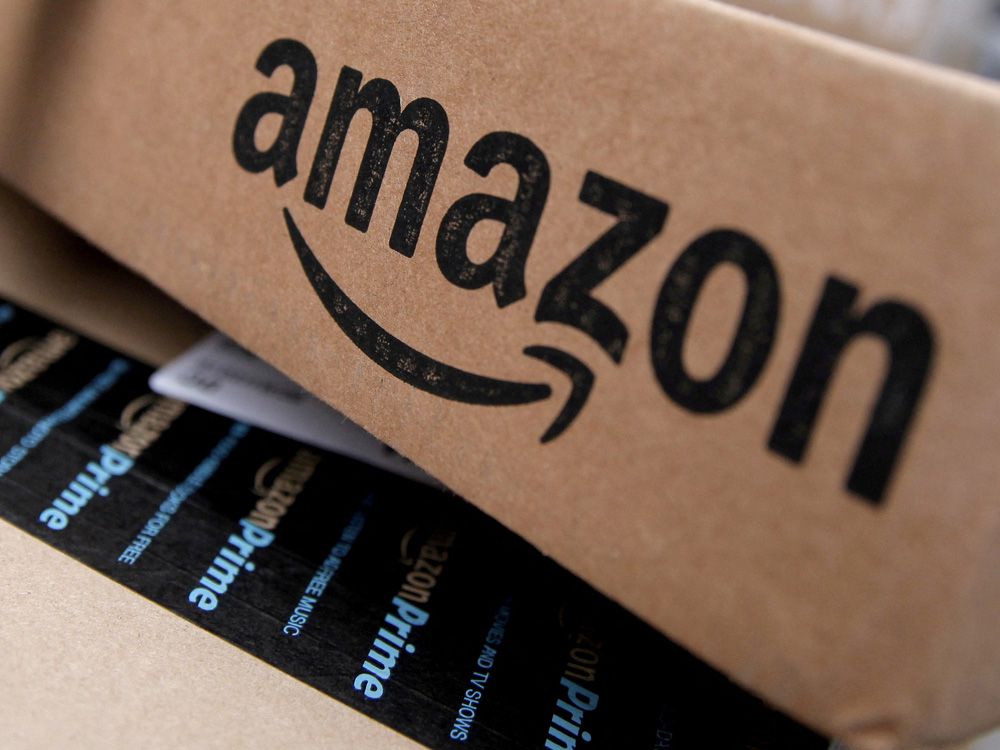The e-commerce giant’s shares fell 10% in after-hours trade
Author of the article:
Reuters
Jeffrey Dastin and Tiyashi Datta
Amazon boxes stacked for delivery in the Manhattan borough of New York City. Photo by REUTERS/Mike Segar/File Photo Amazon delivered a disappointing quarter and outlook on Thursday as the e-commerce giant was swamped by higher costs to run its warehouses and deliver packages to customers.
Advertisement 2 This advertisement has not loaded yet, but your article continues below.
Shares fell 10 per cent in after-hours trade.
After a long-running surge in sales during the COVID-19 pandemic, Amazon’s outlook has dimmed. The company’s expenses swelled as it offered higher pay to attract workers during a labor shortage, and even then it could not fully staff warehouses. A fulfillment centre in New York City voted to create Amazon’s first U.S. union, a result the retailer is contesting. And higher fuel prices are eating into consumers’ disposable income while making delivery more expensive for Amazon.
The Seattle-based company parried by raising fees. Partway through the just-ended first quarter, Amazon hiked the price of its fast-shipping club Prime, which has garnered more than 200 million subscribers, by 17 per cent to US$139 annually in the United States. Effective Thursday, it is imposing an average five per cent fuel and inflation surcharge on merchants that use Amazon’s U.S. warehousing services as well.
Advertisement 3 This advertisement has not loaded yet, but your article continues below.
Amazon’s forecast shows these actions may not be enough to counter such challenges. The company expects to lose as much as US$1 billion in operating income this quarter, or make as much as US$3 billion. That’s down from an operating profit of US$7.7 billion in the same period last year.
“This was a tough quarter for Amazon with trends across every key area of the business heading in the wrong direction and a weak outlook for Q2,” said Insider Intelligence principal analyst Andrew Lipsman.
Andy Jassy, Amazon’s chief executive, said the company has finally met its warehouse staffing and capacity needs, but it still has work to do in improving productivity.
“This may take some time, particularly as we work through ongoing inflationary and supply chain pressures, but we see encouraging progress on a number of customer experience dimensions, including delivery speed performance as we’re now approaching levels not seen since the months immediately preceding the pandemic in early 2020,” he said in a press release.
Advertisement 4 This advertisement has not loaded yet, but your article continues below.
In North America, the company’s largest market, sales rose eight per cent while operating expenses soared 16 per cent to US$71 billion, resulting in an operating loss of US$1.6 billion for the unit in the quarter.
More On This Topic Shopify’s downtrodden stock faces new test as analysts turn sour From punchline to deal in under 2 weeks: The inside story of how Elon Musk won his Twitter prize Meta shares soar as Facebook records stronger-than-expected daily user growth The division that Jassy ran before becoming CEO last year, Amazon Web Services (AWS), has traditionally been a bright spot for the company. The unit increased revenue 37 per cent to US$18.4 billion, slightly ahead of analysts’ estimates.
In retail, the e-commerce giant has had mixed results turning to brick-and-mortar stores to power food delivery and meet consumers wherever they wished to shop. Amazon said in March it planned to close all 68 of its bookstores, pop-ups and other home goods shops, as it focuses on grocery stores. It recently automated two Whole Foods Market locations to make them cashier-less. The company’s physical store sales grew 17 per cent to US$4.6 billion.
This advertisement has not loaded yet, but your article continues below.
Article content Still, Amazon’s outlook reflects broader industry challenges.
U.S. government data shows that online retail sales fell 6.4 per cent in March after declining 3.5 per cent the month prior, the first back-to-back drop since the last two months of 2020. Some economists attributed the change to household budgets strained from higher gasoline prices, while others blamed shifting seasonal patterns. Just this week, a major Amazon delivery partner, United Parcel Service Inc, said it expected e-commerce delivery growth to slow.
The world’s biggest online retailer projected net sales of between US$116 billion and US$121 billion for the second quarter. Analysts were expecting US$125.48 billion, according to IBES data from Refinitiv.
© Thomson Reuters 2022
Financial Post Top Stories Sign up to receive the daily top stories from the Financial Post, a division of Postmedia Network Inc.
By clicking on the sign up button you consent to receive the above newsletter from Postmedia Network Inc. You may unsubscribe any time by clicking on the unsubscribe link at the bottom of our emails. Postmedia Network Inc. | 365 Bloor Street East, Toronto, Ontario, M4W 3L4 | 416-383-2300
